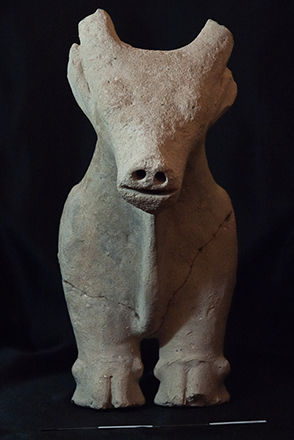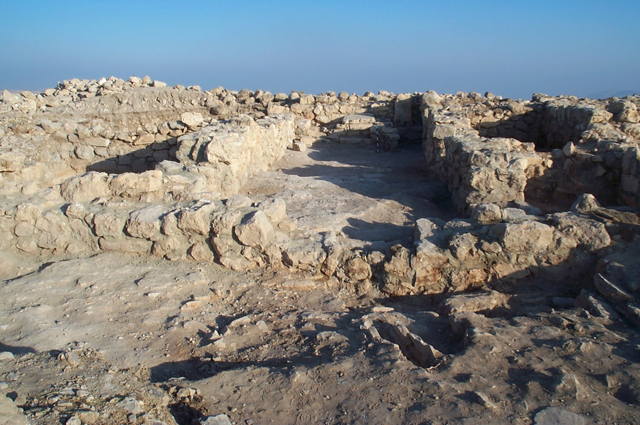You are here
Iron Age temple ruins near Madaba shed light on ancient cult practices
By Saeb Rawashdeh - Aug 15,2019 - Last updated at Aug 15,2019

The temple Khirbet Ataruz located around 30 kilometres southwest of Madaba appears to be the one destroyed by King Mesha of Moab, who ruled in 9th century BC (Photo courtesy of Chang-ho Ji)
AMMAN — Khirbet Ataruz, located around 30 kilometres southwest of Madaba, represented an early Iron Age II temple with two building phases, according to a US archaeologist.
“The temple had the two main phases: Temple Period I corresponds to the late 10th or the beginning of the 9th century BC,” said Chang-ho Ji from La Sierra University, US.
This earlier temple had a rectangular-shaped building with an altar in the courtyard, Ji continued, adding that a high place appears to have been built on the west side of the site during this period.
However, Temple Period II represents the pinnacle of the cultic activities at the site, Ji said, noting that it covered the early/mid 9th century to mid/late 9th century BC.
“This temple appears to be the one destroyed by King Mesha of Moab [who ruled in 9th century BC],” the scholar told The Jordan Times in a recent e-mail interview.
After the destruction of the temple, the king sealed up the temple and the inner courtyard, the archaeologist elaborated noting that it is unclear whether the temple was Gadite or belonging to some other group, but it seems that it was non-Moabite.
“The destruction layer in the temple is most likely to be the result of Mesha’s conquest of Ataroth [Ataruz],” Ji highlighted, adding that the Moabite sanctuary with the inscribed altar was originally part of the outer courtyard of the Iron Age IIA temple.
Furthermore, after the main temple was destroyed and sealed, the outer courtyard area was reconfigured and changed to a Moabite shrine, the scholar explained.
“The Iron Age IIA temple complex on the acropolis is made up of three long rooms with the main sanctuary room [with two side storage rooms] in the middle, flanked by a hearth [fireplace] room on the west and a platform room on the east. The main sanctuary yielded a standing stone [representing a main deity], stepped offering platform [many cultic objects were found in situ] and a storage jar decorated with seven bull reliefs, which stood upright in the middle of the room, and numerous vessels and cultic objects,” Ji outlined,
The temple was violently destroyed, which left a thick layer of ash. In front of the main temple is the inner courtyard that included five altars, the scholar added.
Moreover, the remains of a rectangular building with a small offering platform were found in the inner courtyard along with a bull statue, Ji noted, adding that at the eastern and western ends of the complex were two stepped high places, “where the priests possibly performed important rituals”.
Regarding stratigraphic (study of soil and rock layers) and pottery evidence, Ji explained: “The pottery from the temple area clearly indicate the 9th century BC for its date, while the pottery from the Moabite sanctuary align with late 9th and early 8th centuries BC.”
C14 data from the temple and sanctuary both very well align with relative chronology based on ceramic evidence, he noted, adding that in other words, the temple complex is dated to the early-mid 9th century BC and was destroyed by King Mesha, which entailed the abandonment of the temple complex area.
“Yet, the eastern section of the ruin [the outer courtyard] was continuously used by the Moabites for cultic and residential purposes and the 8th century BC witnessed the dramatic increase of Moabite use of the site, but this period is more characteristic of domestic use, rather than cultic,” Ji said.
Related Articles
AMMAN — On the eastern side of the temple complex at Khirbet Altaruz, a low platform was discovered in 2010 with small altar on the to
AMMAN — Khirbat Ataruz is located 24 kilometres south of the town of Madaba, 10 kilometres west of the village Libb and 3 kilometres east of
AMMAN — An inscription known as Mesha Stele or Mesha Inscription indicates that in the ancient town of Altaruz, located some 30 kilometres s



















